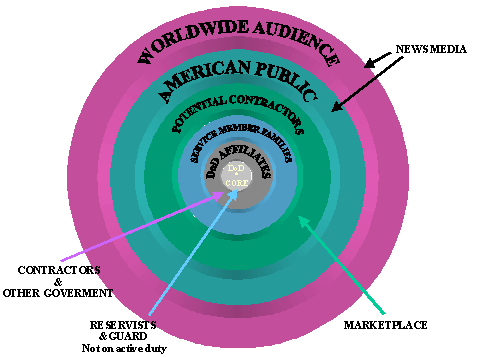
Best Readers: Who are you writing for and what do you want them to believe/do?
Who is your best reader for the paper you are planning to write? I assume you have thoroughly analyzed the action and issues of the case, and you have discovered and thought carefully about the identities of the parties to the case. I also assume you have found a reason to write, something that needs to be said about this case, something that will improve the situation or our knowledge about it. Who needs to know what you have to say? Who, among the parties to the case, represents someone who, if s/he were to read your paper and to be persuaded by it, might do something you want to happen or believe something you want to be believed by someone who counts? That class of persons represents your "best reader." Assume you are addressing only the rational members of such a class, and that they can be persuaded of something that will help you. Do what you can for them with what you have time to build before your deadline, and your best readers actually will help you write. Think of your paper's best readers as your "research assistants" and "editors," helping you to grow the paper where it was weak, and to smooth the paper's flow of ideas where it was rough.
The hardest audience to write for is the one you don't know. Successful papers cause their readers to trust them. Think of whom you would be more likely to succeed at borrowing money from, a trusting friend or relative, or a complete stranger? The more you know about people, the more you can adjust your rhetoric, your selection and arrangement of information and reasoning, to appeal to their concerns and principles. As you move away from people you know about and toward people you know nothing about, your writing will become increasingly shapeless and uncertain. As you move toward a known set of readers for your writing, the individual pieces of the paper will fall into predictable patterns that can be tested against readers' likely responses. Those responses can help you generate new ideas to help your paper.
Your best readers even can help you decide in what order to arrange your information based on what is most familiar or acceptable to them, and what is strangest and least acceptable to them. Start with the familiar/acceptable and build a bridge to the strange/unpopular. This will help you discover what information and reasoning you share in common with them. In revision, this will help you locate the crucial transition points in your argument where the readers' resistance will rise and your paper must meet that resistance with specially tailored explanations.
Writers of academic prose address readers whose attitudes and behaviors are even more well known than the typical "best reader" you might imagine for English 104 and 105 papers. To make your life easier, we will assume that all readers for these cases begin life as academic scholars, and their other interests and knowledge can piggy-back on those basic scholarly behaviors. Academic readers strive to be careful about facts and about logic, reasonable, fair-minded, and willing to change their minds in response to a successful argument. They also nearly always have far too much to read, and can become impatient with prose that does not make itself clearly understood as soon as possible. For that reason, most academic papers contain clear titles that reveal the topic and thesis without mystery or teasing, and their introductions explain what they will do and how they will do it.
Can you address more than one type of "best reader"? Yes--it's inevitable that your best readers will share motives and points of view with others. Think of this more complex audience as a kind of cluster of like-minded types of people. We see this in political alliance building when one group finds common cause with another to make something happen or keep something from happening. In fact, you might find your best ideas coming from teaching two kinds of readers to see things from your point of view. Another way to see multiple "best reader types" is to think of your paper as an arrow striving to hit a target. Outside the ideal center circle, there are concentric rings of very good readers who also can be persuaded by your arguments, if not so well as those in the center. In real world uses of writing, readers you can persuade may help you persuade others to whom they are closer than you are. Strive not to offend the readers in those "outer rings," and concede whatever is not essential to your argument if they care about it. This helps to construct your ethical persona as someone who cares what they think and what they need.
Example of a "target audience" diagram from the Department of Defense (http://www.defense.gov/webmasters/policy/dod_web_policy_12071998_with_amendments_and_corrections.aspx):
